
Bear Spray vs. Pepper Spray
- Jessica Cockroft

Bear Spray vs Pepper Spray: What’s the Difference?
Just inside my utility room door hangs a red backed wire basket lined with hooks. Sunglasses, dog leashes, bills to pay… and personal defense pepper spray. I stuff it in my pocket when I go for a walk around the neighborhood and bring it along on road trips. It’s perfect to protect me from attackers of the human or canine sort.
But when I started exploring bear country, I guessed that it wasn’t what I should bring along on the trail. A little research proved that assumption to be correct.
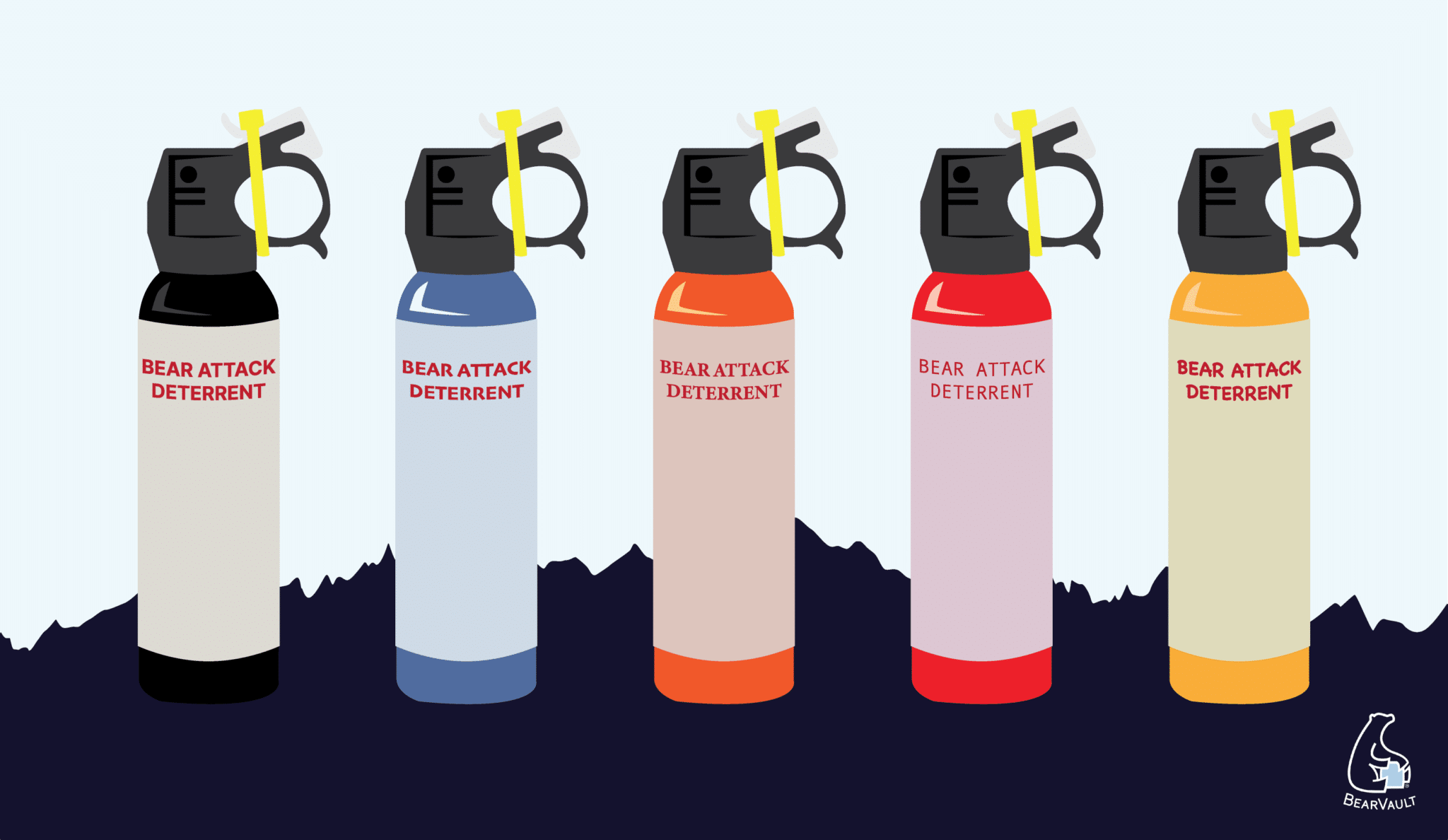
Why Should You Know the Differences Between Bear Spray vs Pepper Spray
It’s important to understand the differences between bear spray and pepper spray, for a lot of reasons. The whole point of carrying either one of them is to stay safe, and each one serves specific purposes to that end. They’re formulated differently, perform differently, and feature different weight, volume, and ingredients.
Let’s look at each one individually before we compare.
What is Bear Spray?
Bear spray is the term used to reference an aerosol formula designed to deter aggressive or charging bears. The active ingredient, oleoresin capsicum, includes a variety of capsaicinoids. All 5 of the major capsaicinoids, including the most potent, capsaicin, are derived from plants in the genus Capsicum.

Or, simply put, it’s oil from peppers.
If you’ve ever chopped up a serrano pepper barehanded and then touched your face, you know what I’m talking about! Now capture all of that heat, concentrate it, and put it in a pressurized aerosol can with suspensory ingredients. That’s bear spray.
Leading brands sell this spray in cans weighing anywhere from 7.9 oz to 13.2 oz, which equates to roughly 5-9 seconds of continuous spray. The range averages around 30 feet.
Shelf life varies, but the expiration date is always printed on the canister so users can verify it’s still safe to depend on. Past this date, there is no guarantee that seals are intact, which could lead to the spray not deploying properly when needed OR the product leaking out during transport.
To dispose of bear spray that has passed its expiration date, or been partially deployed, you have two options:
Empty the canister in a location free of people or animals, facing downwind and pointing towards the ground to avoid getting a face full of blowback. You can then treat your empty canister as plain old garbage (or recycling) and roll it to the curb for the trucks.
OR
Transport your expired or partially used canister to the nearest landfill and surrender it to be disposed of. Keep in mind that there may be a small handling fee from the facility due to it being a ‘hazardous material’.
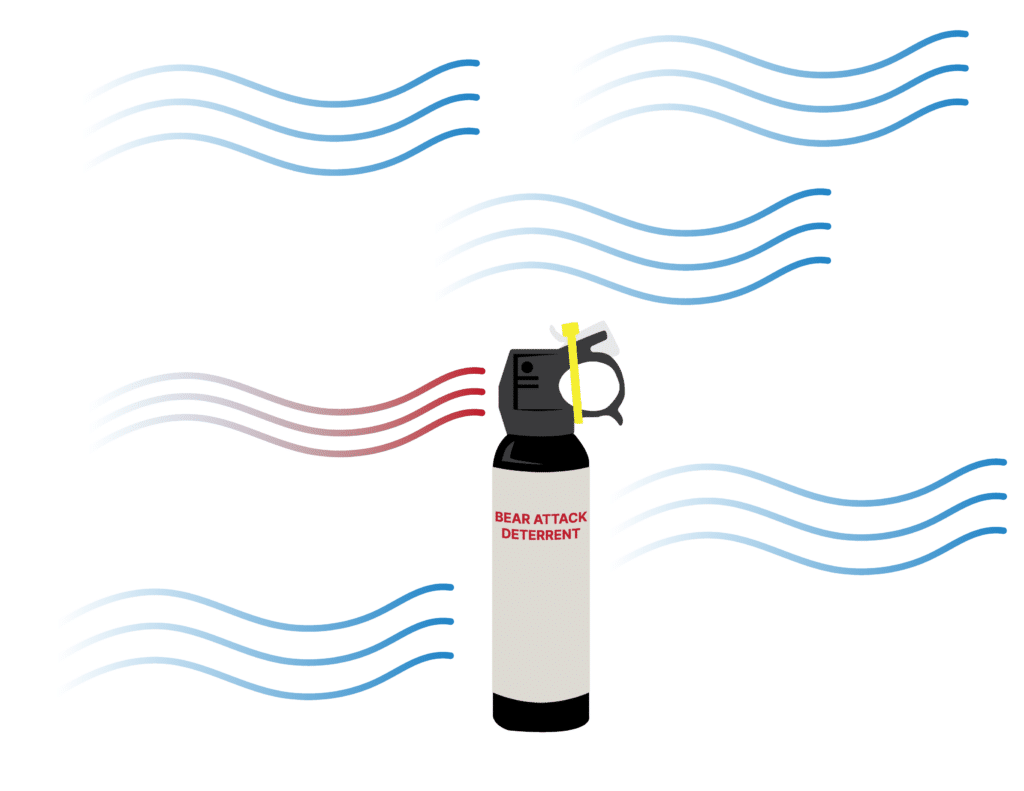
How Does Bear Spray Work?
Bear spray works by causing intense irritation to everything it touches. Skin, vocal cords, eyes, respiratory tracts… It causes temporary blindness, intense coughing fits, and difficulty breathing.
Using bear spray is a last-resort and there is so much you can do to prevent a close encounter of the big and furry kind before grabbing your canister. Be sure and check out this recent post about what to do when you see a bear to make sure you’re doing everything else right!
Studies have shown that using bear spray is more than 90% effective at stopping an encounter from becoming a conflict. Responsible recreators will keep it close at hand. On the rare chance that they do face a defensive or food habituated bear they’ll have a means of defense that is highly likely to succeed.

What is Pepper Spray?
For the purpose of this article, we’ll condense the more-specific-but-just-too-long “personal defense pepper spray” to plain old “pepper spray”. This is the stuff every worried dad gives their teenage daughter when she starts to drive herself around town. It’s what hangs on millions of keychains. It’s what I grab as I head out the door for a neighborhood walk.
Pepper spray is also made with capsaicin, meaning it’s very similar to Bear Spray. The difference comes in when you consider the concentration of capsaicin as it relates to all of the capsaicinoids that are present in the formula. Since the formulation of pepper sprays aren’t regulated you’ll find a wide variety in formula and volume.
But the strongest one currently on the market is 1.4% MC (major capsaicinoids). That percentage is different from the sensationalized 4% OC touted… because OC stands for oleoresin capsicum, which includes all the weaker capsaicinoids!
That’s why you see bear spray, with 2% on its label, be touted as stronger than a pepper spray with 4% on it. Tricky, I know. Just think of it as how eating 5 bell peppers isn’t as impressive as eating a single habanero.
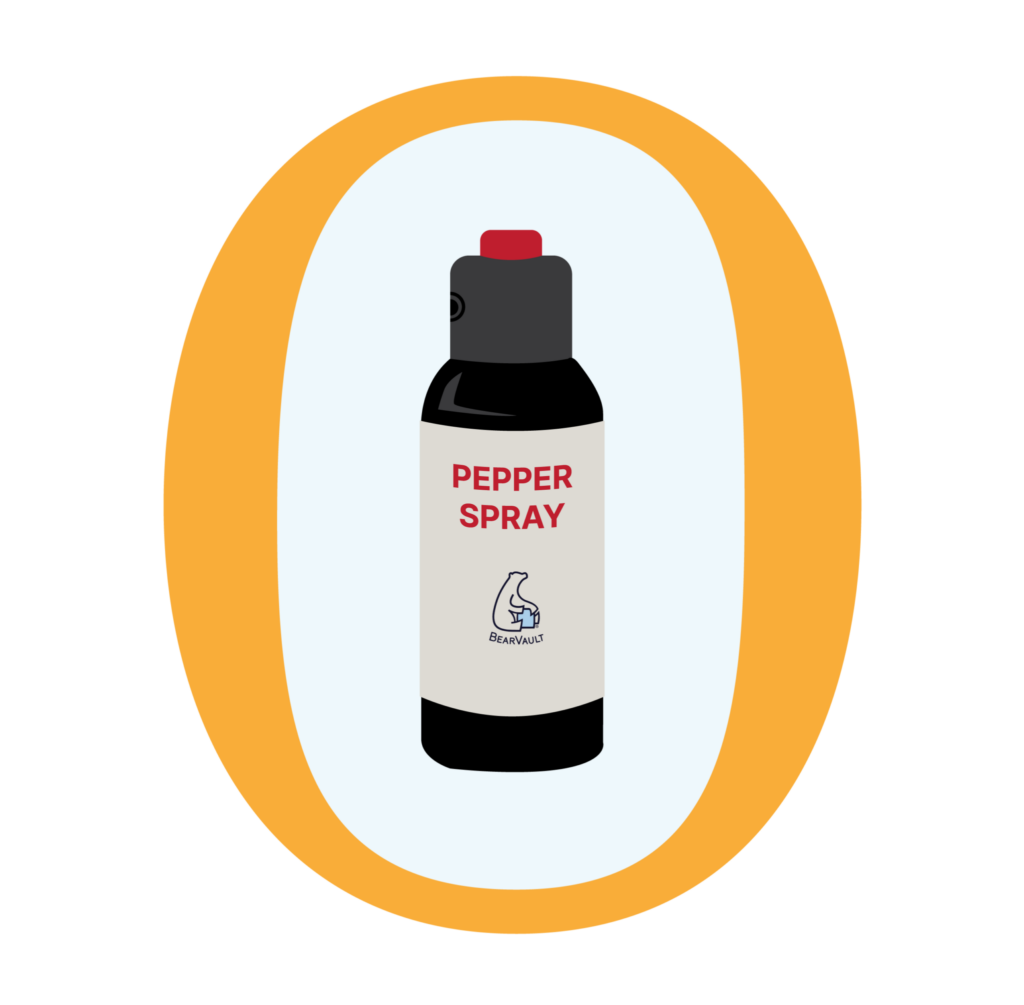
How Does Pepper Spray Work?
The effects of pepper spray on a human or canine attacker is much the same as bear spray. Humans also sometimes deal with an increased impact if they already suffer from asthma or COPD.
It’s highly effective in stopping an attack if deployed with precision and in range. Self-defense experts recommend practicing with inert spray to ensure you’re adept at using it before finding yourself in a dangerous situation.
Owners must be 18-years old in the USA (sometimes younger with parental permission), and each state has their own regulations around where purchases must be made. Certain public buildings with security concerns don’t allow anyone to carry it inside and it’s not allowed on flights. Many private businesses and theme parks post restrictions as well. Always check your state’s regulations and specific destinations to be fully informed.
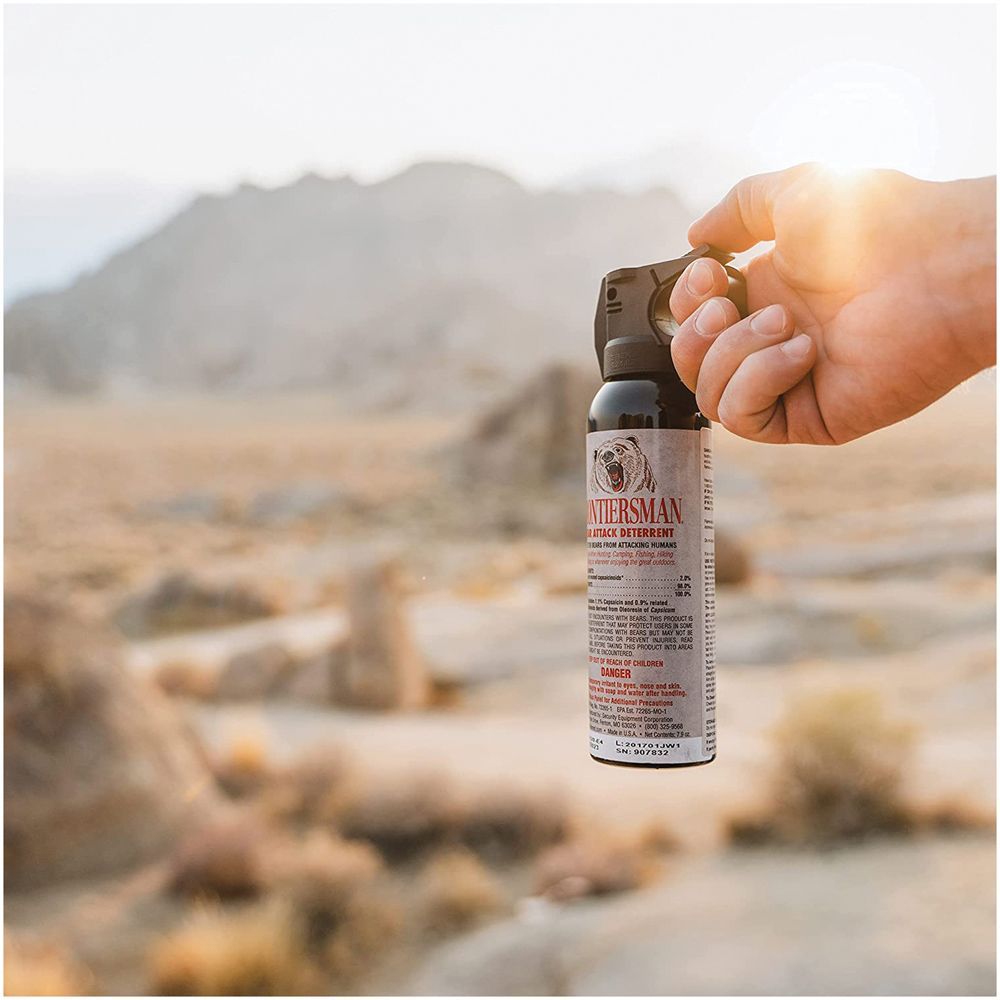
Bear Spray Best Practices
The ownership of any kind of defensive tool or hazardous material should be paired with a certain level of responsibility. There are things owners can do to minimize risks of accidental deployment and increase the chances of successfully using it for protection.
Here are some best practices to aspire to when you decide to include bear spray in your stack of outdoor adventure gear:
- When you’re not exploring, store your bear spray in a cool, dry environment. Always check the expiration date when you pull it out of storage to head to the backcountry.
- Buy an inert spray can to practice. You’ll develop an understanding of your range and width of spray. You’ll also gain muscle memory with continued practice, which could be crucial in the event of an adrenaline filled encounter.
- Keep it easy-access when in bear country. Purchase a bear spray holster or use a carabiner to attach it to your backpack’s shoulder straps. Since many human/bear conflicts occur because of a surprise encounter, speed could be important to prevent injury.
- If you’re in a scenario that requires bear spray, stay calm and wait for the bear to get close enough before deploying it. You have about 7-9 seconds of spray in your can… don’t waste it by spraying prematurely!
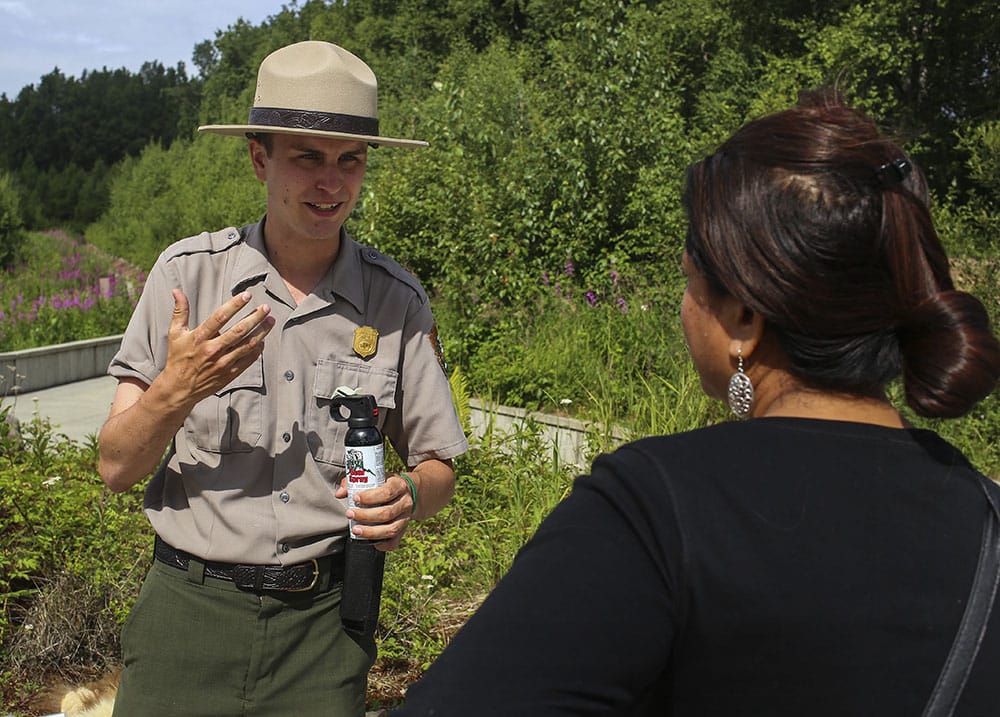
Bear Spray vs Pepper Spray Laws and Regulations
Understanding the differences between bear spray and pepper spray is important for more than just an encounter with an attacker. You’re legally obligated to use all dangerous substances in accordance with their intent and also with federal, state, and local regulations.

Knowing the Differences Between Bear Spray vs Pepper Spray Provides Confidence
Author Profile

Jessica Cockroft
Jess merges her passion for words and an insatiable longing for adventure as an outdoor freelance content writer and marketer. When she’s not busy stringing words together you’ll probably find her planning another camping trip for her crew of kids or taking care of the homestead. You can find her on LinkedIn and Instagram, as well as on her own website.


